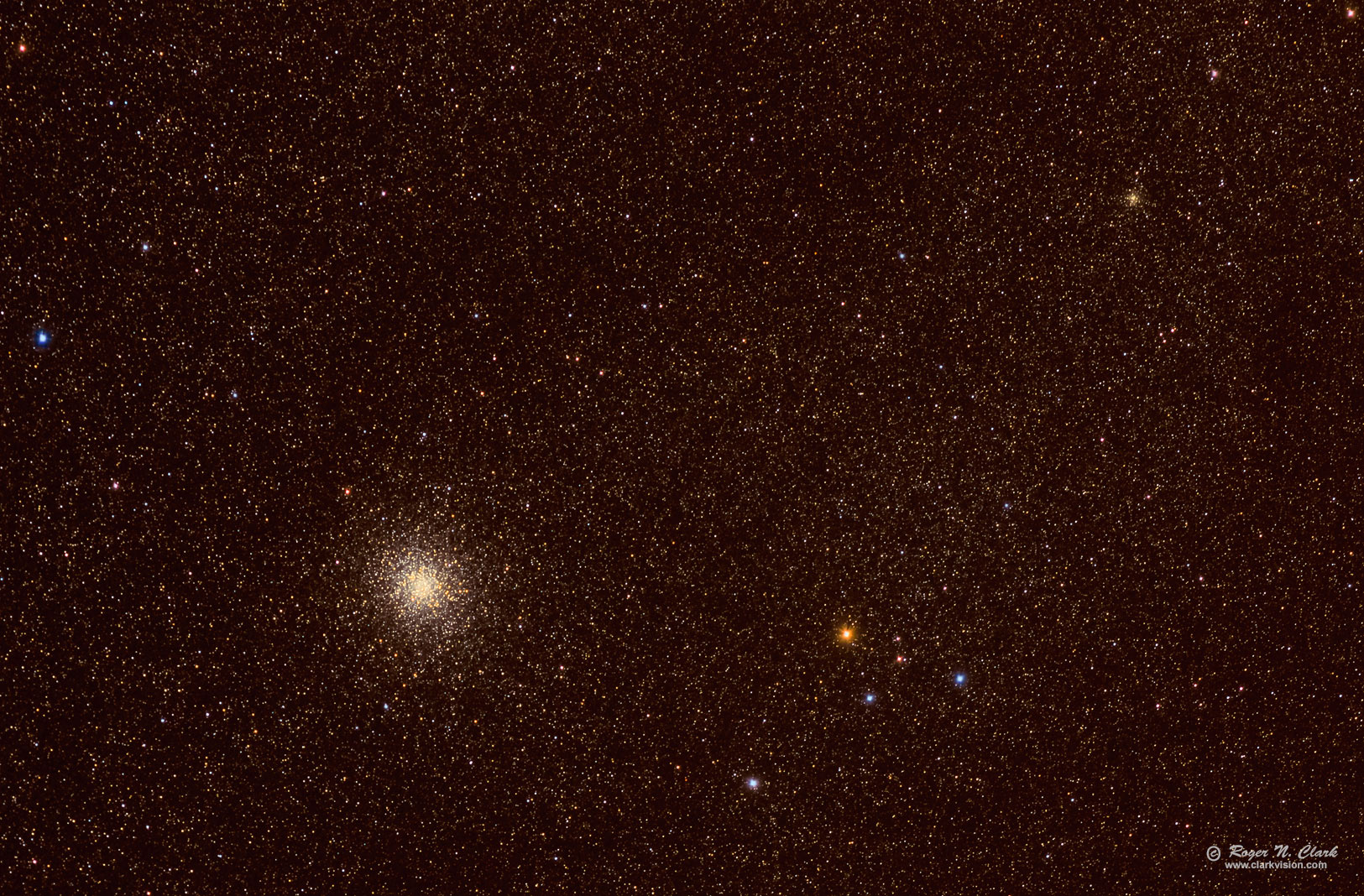| Home | Galleries | Articles | Reviews | Best Gear | New | About | Contact | Gallery Index | Previous |
Next |

| Home | Galleries | Articles | Reviews | Best Gear | New | About | Contact | Gallery Index | Previous |
Next |

One of the grandest globular clusters in the night sky, M22 is about 100 light years in diameter and a little over 10,000 light years away. Its apparent size is similar to the diameter of the Moon. To the upper right is the small globular cluster NGC 6642.
The burnt orange background is not light pollution; it is interstellar dust. M22 sits near the galactic center in a region of high dust.
This is a natural color image. The high dynamic range of astrophotos must be stretched to bring out the range of details the camera recorded. But the typical image stretch process loses color for brighter subjects (e.g. stars and the brighter parts of deep sky objects become whiter as they are made brighter). This image uses a new algorithm, rnc-color-stretch that does not lose color during the stretch. How do we know the colors are reasonable? The star colors can be checked against stellar photometry. Red stars have B-V > 2, orange stars have B-V of 1 to about 2. The blue-white stars have B-V in the range of 0 to -0.5. The colors closely follow the color sequence in Table 1 at Color of Stars. Solar-type stars have a B-V of 0.63 and appear close to white (daylight white balance).
Technical. This image was obtained with a Canon 7D Mark II 20-megapixel digital camera and 300 mm f/2.8 L IS II lens plus a 1.4x teleconverter giving 420 mm at f/4 and ISO 1600. No dark frame subtraction, no flat fields. Tracking with an Astrotrac and no guiding. Only 9 minutes of total exposure (nine 1-minute exposures).
Post processing: stretched with rnc-color-stretch. Also see Astrophotography Image Processing Basic Work Flow. Specifics on processing this image with rnc-color-stretch is detailed here: Messier 22 + Interstellar Dust Image Stretching with the rnc-color-stretch Algorithm
The Exposure Factors, CEF, CEFA are measures of the relative amounts of light received from a subject. It can be used to fairly compare wildly different lens/telescope apertures and exposure times. For this image:
Modern DSLRs like the 7D Mark II include on sensor dark current suppression and low fixed pattern noise at ISOs around 1600 and higher, making no need for dark frame subtraction. Modern raw converters correct for light fall-off and also correct for hot/dead/stuck pixels. This makes processing low light images easy: simply align and average.
To learn how to obtain stunning images like this, please visit my Extensive Articles on Photography .
See my review of the Canon 7D Mark II and why it is so good for astrophotography: Canon 7D Mark II sensor analysis.
Keywords to this image = astrophoto-1 star_cluster Messier night low-light digital_astro canon_7d2 rnc-color-stretch
Image ID: m22-globular-cluster.c08.13.2015.0J6A5340-49-t7-rs200-c0.5x-1625s.jpg
| Home | Galleries | Articles | Reviews | Best Gear | Science | New | About | Contact |
Last updated November 03, 2025